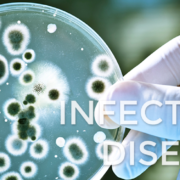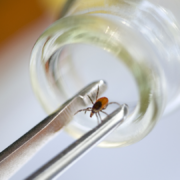Lyme Disease Rash Timeline
Noticing a rash (of any size, color, shape, or texture) immediately raises questions: Am I having an allergic reaction? Is something irritating my skin? Did I get stung by an insect? But when that rash looks like a dart board bullseye, the answer seems to proceed the question—I’ve been bitten by a tick and now have Lyme disease. The classic bullseye rash is often indicative of a bite from an infected tick, but the rash isn’t always so universally shaped, and not everyone who contracts Lyme disease gets it. Lyme disease is a tricky bugger!
But you are here because you have a concerning rash and questions that need to be answered right now—because the easiest way to treat Lyme disease is in the early stages.
Spoiler alert: Even late-stage chronic Lyme disease can be eradicated!
What Is the Lyme Disease Rash?
While the classic bullseye rash, also known as erythema migrans, is often believed to be the telltale sign of Lyme disease, 50% of people with Lyme disease never get the rash. This skin manifestation usually appears about two weeks after a black-legged tick (deer tick) carrying the bacteria Borrelia burgdorferi takes hold.
However, the Lyme rash can appear much earlier or way later (up to three months later). To make things even more enigmatic, the rash isn’t always bullseye in appearance; there can be many rashes and not just one, and it doesn’t necessarily appear at the site of the tick bite.
How Long Does the Lyme Rash Last?
While no two cases of Lyme disease are the same (which is why treatment must be completely customized), the tick-borne disease rash typically lasts for several weeks. The appearance of the rash usually looks much worse than it feels. In fact, for most, the rash from this infectious disease does not come with heat, itchiness, or pain.
What Should I Do Now That I Have One?
Diagnosing Lyme disease is very difficult. There is a tiny window where an enzyme immunosorbent (ELISA) blood test, used to measure antibodies against B. burgdorferi, would be able to provide an accurate positive result. Your body first needs time to mount an immune response to the infection (so testing in the first few weeks is not possible). Then there is only a short time as the bacteria moves through the bloodstream where the immune system is functioning well enough to produce antibodies against the bacterial infection (this is the testing window).
This is not to discourage getting tested, but if you have a rash, it is essential to be proactive and seek out healthcare assessment and guidance. Addressing early Lyme disease is far easier than tackling long-left-untreated Lyme disease.
If you also have any symptoms of Lyme disease (usually flu-like symptoms including joint pain and neck stiffness initially, if early symptoms manifest at all), a diagnosis will likely be made based on the rash and symptoms factor. Since false negatives and missed testing windows are more the norm, the Center for Disease Control and Prevention (CDC) actually recommends that a diagnosis be made based on four general factors, even if a rash does not appear: tick exposure, endemic locations (such as wooded areas in the Northeast), symptoms, and family history.
Here’s where it gets tricky again. If the rash manifests much later, say three months later, the infection has likely disseminated. It is widely believed that chronic Lyme disease can’t be cured, and the standard approach at this stage is symptom management and possibly more antibiotic treatments like doxycycline, as co-infections are common.
Seeking a Lyme disease specialist is strongly advised, as Lyme disease is a complex affront to your entire being (mind and body) in all stages from early to post-treatment Lyme disease syndrome. It is a multi-faceted, multi-systemic disease backed up by opportunistic co-viruses, bacteria, fungi, and/or parasites.

A Different Approach to Eliminating Lyme Disease
At Innovative Medicine, we know that Lyme disease does not have to be a life sentence and, in fact, can be eradicated. While the road to Lyme disease freedom is often long, winding, and sometimes riddled with speed bumps, U-turns, and full-stop traffic jams, NYCIM has a roadmap that includes five phases completely customized to your unique Lyme disease road trip.
A treatment plan that includes addressing energy function, inner milieu, immune response, oxygenation, and toxicity is paramount for success—but success has proven possible time and time again. The road is yours to reclaim!
Disclaimer: The statements made in this article have not been evaluated by the Food and Drug Administration. Any products or treatments mentioned are not intended to diagnose, treat, cure, or prevent any disease. Please consult a licensed medical practitioner for medical advice.
At Innovative Medicine, we believe in transparency. We want you to know that we may participate in affiliate advertising programs pertaining to products mentioned herein.
See how we can help you restore complete health of body, mind & spirit.
Join our mailing list and receive exclusive offers + information!







Leave a Reply
Want to join the discussion?Feel free to contribute!